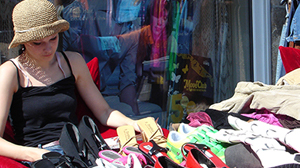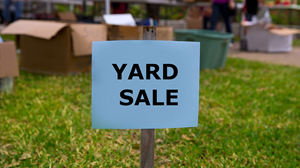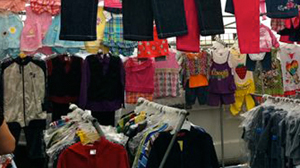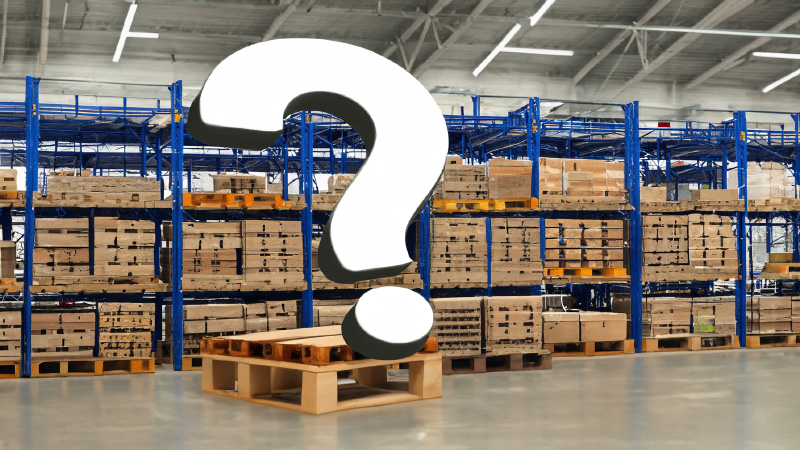Research and Preparation Back to Top
- Find the market where you’d like to sell. Flea markets seeking out vendors usually advertise on Craigslist, local newspapers, and via online venues such as news station chat boards. Check these avenues out to find a market in your area, or ask friends about the markets they like to shop.
- Observe and take notes. Scout the market you’re considering for your booth and look at the population, the products being sold and their prices. Note any trends that you identify.
- Note other vendor’s prices. Your prices always should be close to or ideally below the prices of your competitors, especially if there are many of you selling the same types of items at the same flea market.
- Depending on your city, county, and state requirements, you may need a tax ID number or resale license. The flea market office can usually tell you what you’ll need, and many have the paperwork available onsite.
- Try to reserve a booth as close to the entrance as you can. This will ensure that buyers entering and leaving the flea market will see your booth first, and then again as they prepare to leave. The more visibility you have, the better!
- Pay for your spot in advance if possible. Sellers all tend to arrive at the same time and stand in line for a spot. Maximize your chances of getting a spot in the best area by knowing who you’ll need to talk to and where you’ll need to go. If the market offers that option, paying ahead guarantees that you’ll have a spot.
- Ask the flea market owner if they provide any additional services to their vendors. Some provide a newsletter to their vendors that gives them business tips, local auction dates and times, recommended places to buy products, etc.
- Choose the highest traffic booth space, if you have a choice. If entrance spots aren’t available, try to be near other booths or concessions that will attract the sort of traffic that you want.
- Invest in a pop up shelter, as well as some good folding tables and folding chairs. Make sure you have some anchors (such as 2 ½ gallon buckets full of sandbags or cement) that you can use to hold your shelter down if the wind picks up. Tables should be clean, or have some table cloths (preferably solid colored) to cover them with. Presentation is very important to buyers and will help increase sales.
- Setting up a canopy will not only give your space a professional store-like appearance, it will also give you protection from the hot sun or rain. After setting up your tables, arrange your merchandise in an organized manner. Remember, a junked-up messy area can take away from the value of some items. It can also cause people to start tripping all over the place.
- If you need electricity, bring extension cords! Most flea markets have power outlets available but they are not necessarily going to be near your booth. You can often hook up to one of your neighbors’ power supply if you bring your own extension cord.
- If the flea market doesn’t specify a setup time, get there early. You want to have everything ready to sell when the customers arrive, and they will arrive the moment the flea market opens.
- Make up a cash box ahead of time with plenty of change, and note down the total amount so that when you can take out the day’s receipts, the box is ready for next time. At the booth, keep the cash box close by and out of sight.
- Use a tote bag to assemble a kit of things you’ll need such as tools, marking pens and tags, tape, paper towels, etc. Leave the kit packed and ready to go each time. This saves time on sale day and helps ensure you don’t forget anything.
- Be prepared with the following: pens, pencils, markets, a notebook, price stickers or tags, extension cord, bungee cords, zipties or Velcro straps, safety pins, shopping bags for customers, wet wipes or hand sanitizer, tape, scissors, calculator, business cards, sunscreen, bug spray, aspirin/ibuprofen, a small cooler with water.
- If you sell clothing, fashion accessories or shoes, make sure you have a full length mirror in your booth. Shoppers love to check themselves out before buying an item – don’t lose out on a sale because a shopper can’t see what she looks like in the coat she is trying on!
- Bring more than you intend to sell. You may still end up bringing things home but it’s best to have a variety of items always available rather than seeing your stand get depleted throughout the day. Full stands attract more buyers!
- Don’t be afraid of bringing items you think you won’t sell. There is a market for everything and at the right price, anything goes!
- If you can, bring someone with you. Not only will it be helpful to help you set up and tear down without spending hours on it, but it will also allow you to step away from the booth for a few minutes during the day and see what others are selling at the market.
- Having someone with you can also help wait on customers and watch for shoplifters. Professional shoplifters often work in pairs. One person will distract the vendor with questions, while their partner steals items.
- Make and bring change! Make sure you have all kinds of coins (especially quarters) and small bills. Many people are likely to show up with $20 bills and you need to make sure you don’t run out of change in 3 or 4 transactions.
- Pack a cooler! Most flea markets have a snack stand or place to get something to eat and drink but if you’re really busy, you might not have time to step out. Bring a cooler with ice packs, water, small snacks or anything to hold you over through the day.
Business Issues Back to Top
- Know your audience. Know the demographic and cater to them by placing attractive items to that demographic at the front of your booth. If your flea market caters heavily to teenagers for example, be sure to put items related to that demographic where they can be seen at a glance.
- Keep track of accounts and customer records. A simple notebook to write down your sales may be enough at first, but it is much easier to keep track of sales and inventory with proper software such as Intuit or Quicken, as well as CRM (Customer Relationship Management) softwares. A CRM would allow you to collect your customers’ data (such as email address, phone number or even home address) so you can then market to them outside of flea market opening times.
- Keep inventory records. Make sure you know how much you bought of something, how fast you sold it and what your profitability was. This will allow you to make faster and more educated purchasing decisions down the line, and you’ll be able to pull up sales information for an item quickly and easily.
- Take advantage of technology and tools. If you only accept cash or check payments, consider accepting credit card payments. This will make it easier to close sales with customers who may not be carrying enough money in cash. Consider obtaining a merchant service account with your bank and take advantage of Smartphone applications for Credit Card processing.
- Accepting credit cards can increase your profits. These days, you can purchase a small adapter to turn your smart phone into a credit card processing terminal (the Square app). Catch customers who have run out of cash!
- If you have no designated cashier, consider wearing a fanny pack or an apron with large pockets to avoid leaving a cash box unattended.
- Have a notebook or receipt book handy for customers who may request a receipt for their purchase. Don’t lose out on potential sales because you are not set up for receipts! Customized receipt books are also a great way to market your flea market booth!
- Keep a notebook on your table to make notes of what customers are looking for, to keep up with trends, and to make notes of what merchandise will sell well. (Tie the pen to the notebook with a string so you don’t lose it.)
- Know your tax liability. Check with your local revenue department to determine your tax liability. The laws are different from jurisdiction to jurisdiction, so get all the facts before the day of the swap meet.
- Unless you plan to allow returns and exchanges, you may want to display an ?all sales final? or ?merchandise sold as is? sign to protect yourself against having to deal with refunds.
- Price it right. Starting out at a lower price is often the way to go. Calculate what you need to get for an item based on your purchase cost for it, the price of your gas and your stall rental. General retail markups for lower priced products is 40% to 50%. Mark your items up 30% to 35%. Remember you are trying to get a feel for the markets and your products. When you determine which items sell and which don’t, you can adjust your prices accordingly. If you raise prices, remember to do it gradually – never spike a price.
- Make sure you price all of your items visibly. When customers see no prices they assume the price is high. Many will walk past you, afraid to ask for fear of having to then tell you, no thanks.
- Favor volume over profit margins. It’s more profitable in the long-run to move your inventory quickly, make money for the next load and keep bringing in fresh inventory. If customers see the same stuff over and over that hasn’t sold, it lowers the perceived value of the merchandise.
- Offer volume discounts when possible. Offer combination deals like ?4 for $20? instead of 1 for $7.
- Lower your prices as the days go by. If you have multiple flea market days, charge your premium pricing on the first day. For every subsequent day that those same items haven’t sold, discount them until they’re gone. Focus on moving everything as quickly as you can.
- Do not “hold” any merchandise unless it is paid for. People who ask you to hold something for them rarely come back, and you have lost out on a potential sale by taking the item off of your table.
- Make it a family affair. Involving your children in the flea market business is a wonderful way to spend quality time together while teaching them about customer service, accounting, sales, marketing, and responsibility. You can even encourage them to sell some their old toys, clothing, and electronics so they can make their own money.
- Write down your experiences. Write down what you brought, what you should bring next time, what you could have done without. Write down what was effective and what was not, and anything else you learned. Next time, you’ll be able to look at your notes to improve your experience from one week to the next.
- Reinvest a portion of your profits into more merchandise. Find a combination that works for you, but always reinvest a portion of what you make to help you grow your business.
Merchandising Back to Top
- Use clothing racks to merchandise clothing by size. Avoid wasting time answering questions about whether you have this item in a particular size. Mark your racks by size and tell customers that everything you have in that size is on that particular rack.
- Use inexpensive mannequins or mannequin torsos to display attractive pieces of clothing prominently.
- Merchandise shoes by size, outside of their retail boxes. Allow customers to see what styles are available in their size at a glance without opening and closing dozens of boxes.
- Sort through mixed lots of merchandise and organize them by type of item. It’s much easier for consumers to find what they need if they can easily see what’s available. Digging through mixed bins can be time-consuming and is visually less attractive than an organized layout.
- If you sell hats, consider using mannequin heads to display the most popular styles. Organize your hats by style and/or size to make it easy for shoppers to browse.
- If you sell cosmetics, try to avoid laying them out on a table. This can invite a high amount of theft and devalues the merchandise. Purchase custom standing cosmetics displays to attractively merchandise the items in a way that catches the shopper’s attention and makes the items look valuable.
- If you sell small items like jewelry, gemstones, cosmetics or small electronics like cables and adapters, consider using locking display cases. Customers will still be able to see inside but will be less tempted to touch everything and/or walk away with unattended units.
- Use a retail display to display jewelry attractively. If that is not an option, use simple hooks to hang necklaces and bracelets from the top of your booth. Quick, easy, and much easier for buyers to see the items!
- If you have items that you aren’t sure how to display, be creative! One flea market vendor we visited had a series of handmade rings displayed inside open egg cartons. Each ring had its spot, and people stopped to admire the creativity of the display, at which point she could engage them to purchase.
- Show samples. Instead of having items on racks, in boxes or stacked out of reach, create a sample table at the forefront of your booth to show samples of what you have for sale deeper inside your booth.
- Merchandise for gender. It is known that there are differences in the way men and women shop. If your booth caters primarily to men, make sure your presentation is more direct – everything in a logical, obvious place. Women prefer to browse and dig for treasures, while men typically prefer to find what they need easily, pay and leave.
- Cover the front and sides of your tables to hide all the empty boxes and stuff you have stored underneath. Consider using plastic table skirting that already has adhesive on it. Place this all around the outside of your tables to make your display look cleaner.
- When setting up your tables, always leave enough room for three people to walk side by side between your rows of tables. This will encourage browsing as people do not typically like to be crowded. Set up one or two folding chairs near the front of your booth as an invitation for tired or elderly buyers to have a seat and rest.
- Place special items (those you know will be good sellers) where they will be seen easily. Don’t bury them in a crowd of lower selling items. When you have items that aren’t moving as well as you would like, move them around every hour or so. This will give your booth and tables a ?new look? that may encourage browsing, even by folks who have already been to your booth.
- Add height to your table. Upside down crates, bins or staggered shelving gives you a place to display more special items on your table. Bins or boxes that you carry the items in can be inverted and/or used as extra ?tables? in a pinch in front of or to the side of the original table. As long as people have a clear path to get to the table to pick up items, use your imagination!
- Instead of stringing a series of tables together in a line at the front of your booth, put your tables in the shape of an inward “U” so customers have to enter your display space in order to view products. This allows you to speak to customers away from the busy walkway, and it draws them in to see all the items you’re offering, away from the bustle of the passing crowd.
- If stuff isn’t selling, move things around. You never know what catches people’s eyes.
- Look at your booth from outside. Once you’ve set up, walk outside and see your booth from the point of view of your visitors. Are your signs clearly visible from the different directions where people will approach? Is your booth inviting? Do you have any distracting loose ends showing?
- Step out to the customer’s side of your table frequently and rearrange so every item is visible. If you have items on the ground or floor, try to group them together and place them beside something tall so they won’t be tripped over.
Marketing Back to Top
- Promote! Don’t rely just on the foot traffic that your flea market gets. There are things you can do to drive additional customers to your booth like advertising through community boards, churches, classifieds, flyers, craigslist and couponing websites.
- Make inexpensive business cards to hand out as coupons to customers to encourage repeat visits. For instance, make 20% off purchase of $20 or more to entice customers to come back. VistaPrint is a great printing company that offers very low prices on business cards and flyers.
- Use colorful and impactful signage to highlight specific brand names, high-demand items or special promotions you’re running. The idea is to catch the shopper’s eye as he or she walks by.
- Arouse curiosity. Marketing is easier when someone asks you about your business, so find a way to bring people to your booth with a question on their mind. It will provide a perfect opening for you to talk about what you have to offer. For example, have a contest to guess how many dog biscuits or jelly beans are in a container. Anything that makes people stop and take a closer look increases your odds of making a sale.
- Make sure your signs are neat and easy to read. Be creative in your approach to getting people’s attention and interest. Balloons tied to your tables, canopy, etc., is a great way to catch attention.
- Consider investing in plastic shopping bags with your business’s name and flea market stand number printed on them (if you have a permanent space). Other shoppers will see your bags all around the flea market and advertise for you once they leave the premises.
- Set up a Facebook page to keep in touch with your customers. Shoppers aren’t just the flea market’s customers, they are yours and it’s very helpful to stay in touch with them so you can market to them and make repeat sales the next time they visit the flea market.
- Use dry erase boards and colorful markers instead of printed signage so you can change your messaging throughout the day. As items sell out or items become slow-moving, communicate any limited time promotions or put a different item on special every hour by communicating it on the board.
- Be creative and think on your feet! Bring extra construction paper with you to make signs on the fly if you notice certain items aren’t selling. Sometimes it’s as simple as attracting the buyer’s attention to an item to make it start selling.
Service and Salesmanship Back to Top
- Be active. Greet your customers as they walk by and invite them in. Don’t just sit at a table reading or going through your phone, as people are much more likely to walk right by you if they are not engaged.
- Attract buyers with your booth environment. If you know that the flea market is frequented during daytime hours by mothers and their children for example, consider having an interactive game (like bobbing for apples) at the entrance to your booth. If the child stops, the mother will stop as well and it will be your opportunity to greet and engage her.
- Be open to dialog. Many people come to flea markets expecting to be able to barter. Be open to bartering and negotiating price with your customers, and know ahead of time the lowest price you would accept for a given item. Be friendly during the negotiation. It’s sport, not conflict!
- Be prepared to offer volume discounts when bartering. If a customer is insisting on paying a price you believe is too low, consider selling it to them at that price if they buy multiple units of the item or combine the purchase with other items.
- Have something for the kids. Consider having balloons, lollipops or something small to give out to kids who shop with their parents. This will keep the kids quiet and entertained so they don’t detract from their parents’ shopping experience, and will also lead them to stop at your booth while walking through the market.
- Cross sell. Consider creating preset volume offers, also called 2-fers and 3-fers. One item costs this much, but if you buy 3, you get a discount! Buyers love this kind of deal and it allows you to move more volume and make room for new product faster.
- Demonstrate! If you are selling any item that requires assembly or that is a bit unusual such as an “As Seen on TV” item, sports equipment or cool kitchen tool, consider demonstrating how it works. People will stop out of interest and will immediately feel engaged. You can also opt to show a video of how the product works, which can be enticing and informative.
- Be upfront with your customers about damaged items. Don’t wait for them to notice a defect- point it out yourself. Honesty and integrity are key to building a solid business.
- Customer service is crucial. People want to be treated well, regardless of where they are shopping. Be the flea market vendor that is known for friendliness and helpfulness. Shoppers will be glad to buy from you, even if your prices are the same as other flea market vendors.
- Be positive. Shoppers want to buy from positive sellers. Shopping at a flea market is supposed to be fun, make it fun for your customers.
- Wait until a shopper has honed in on a particular item before offering any comments about it and be ready to bargain.
- Look like you want to do business. Too many exhibiters at flea markets, craft shows, fairs and conventions seem to think the merchandise speaks for itself. Yes, it’s hard work to stand on your feet and greet passers-by, but doing so will let people know you’re proud of what you have to offer.
- Know your items. Be ready, willing and able to answer any questions your customers may have. If you know the history or provenance of an item, or any known facts about an item, being willing to share this information will go a long way to closing a deal.
- Work on something in your booth. People stop and look if there is activity going on. If you play around with the merchandise, hold it up for people to see, work on fixing an item or otherwise fiddle with the items, people will be interested in what you’re doing and will stop to chat. Don’t sit there and wait for people to stop.
- Be ready to sell! People don’t usually come to flea markets to buy things they need. They go to see if there’s anything they want. It’s your job to make sure they want something you’re selling! Stand up, show off your product and engage your customers.
- Set out a small dish with wrapped hard candy or mints. People who stop to get a candy will also shop. Keep the bowl very small, so people will take just one piece of candy. If you put out a huge bowl of candy, people are more likely to grab a handful and keep going without stopping.
- If you don’t want to invest in your own custom plastic bags, save all the paper and plastic grocery bags you get when you go grocery shopping. Keep them all in a box at home and bring them out to every selling day. Customers will buy more if they have a way to take it all with them!
- Always be honest. Be fair and truthful with customers. If you know that an item has a flaw or needs to be repaired, tell the customer before they buy. It’s not OK to be dishonest just because you’re displaying an ?as is? sign. If you get a reputation for being unfair, it will hurt you in the future.
Products and Inventory Back to Top
- Be strategic with inventory selection. Don’t be afraid to diversify. If you’ve been selling bed sheets and pillows successfully, consider adding towels to your inventory for example.
- Sample new merchandise. While there’s nothing wrong with sticking to what works for you, place small sample orders with wholesalers to test out different types of products and see if you can build a regular customer base for a new product line.
- Visit wholesale industry trade shows to meet companies face-to-face, negotiate deals in person and take advantage of a huge scope of products all under one roof. You can typically source everything you need in one visit to a trade show, from several vendors.
- There are many printed sources and wholesale search engines dedicated to helping businesses find product. Some of these publications include: Retailer’s Forum, Swap Meet Magazine, Independent Retailer, Solo Mayoreo (Spanish), Web Wholesaler, Western/Eastern Merchandiser and more. Popular B2B sourcing websites include: TopTen Wholesale, CloseoutCentral and WholesaleCentral. These search engines allow you to enter a search term and find wholesalers nationwide who can provide you with those products.
- Appreciate the value of “loss leaders.“ Consider placing high-demand items that may be low profit for you in a very conspicuous place. An example of a loss leader might be a flat screen TV. You may not have a lot of margin on that item, but it will draw people into your booth where they will see everything else you have for sale. Just because something is priced a little too high doesn’t mean it is of no value to you. On the contrary, a slightly higher priced item that is in high demand among shoppers might be the key to driving more traffic to your booth.
- Start with at least two pallets of merchandise for variety. If you buy just one to fill up an entire flea market stand, chances are your stand will be bare and won’t attract much attention. The contents of two pallets usually make a much better visual impact and stop customers as they walk by.
- Don’t be afraid of broken merchandise. Even if you wouldn’t buy it, our experience proves that others will if the price is right.
- Look for merchandise all the time and don’t get lazy. Variety, fresh inventory and staying informed on what customers are looking for is the best way to stay ahead of the competition.
- Add holiday/seasonal items to your inventory early enough in the season so you catch the early holiday shoppers who are looking to save money on gifts and decorations.
- It is always a good idea to have an inventory worth at least $1,000 – $2000 on hand. You may not need to have all of it out at one time, but it is a good idea to be able to keep you booth stocked throughout the day. An empty booth and sparse tables will turn potential buyers away.
- If you are just starting out and don’t have more money available than the cost of the booth, sell your own items that you no longer use and ask your neighbors if you can help them clean out their garage in exchange for a box of their unwanted stuff. This will get you some cash flow that you can then invest in a box of wholesale items to resell the following week.
- Avoid bringing huge items like large pieces of furniture, beds or armoires unless you have a delivery service. Most of the customers who visit your booth won’t be equipped to take a very large item home and you may lose out on those sales. If you offer a delivery service, make sure you advertise it clearly!
- Some things you sell can also help you sell other things. If you are trying to sell a shelf, put stuff on it. A dish can also hold some smaller objects. It is important to not obscure the items you wish to sell. A flea market table is usually crowded, but remember that every item must be visible to be sold
- Always be on the lookout for good deals on all kinds of wholesale products. While there may be a product category that sells best for you, don’t turn down an amazing deal just because you’re not familiar with the merchandise. Do some research, get familiar with it and give it a try? You never know what new customer base you will build for a product you’d never considered selling!










